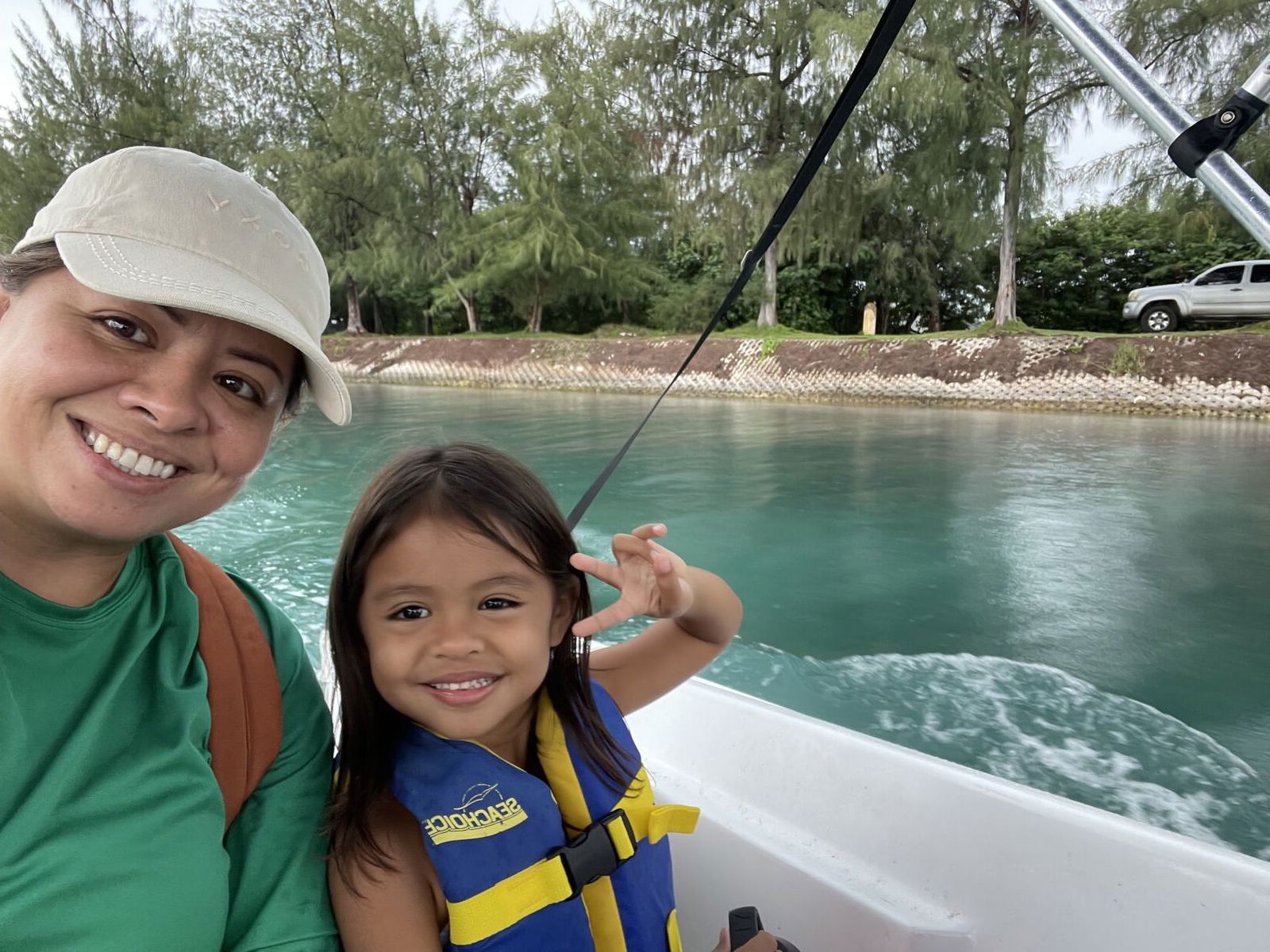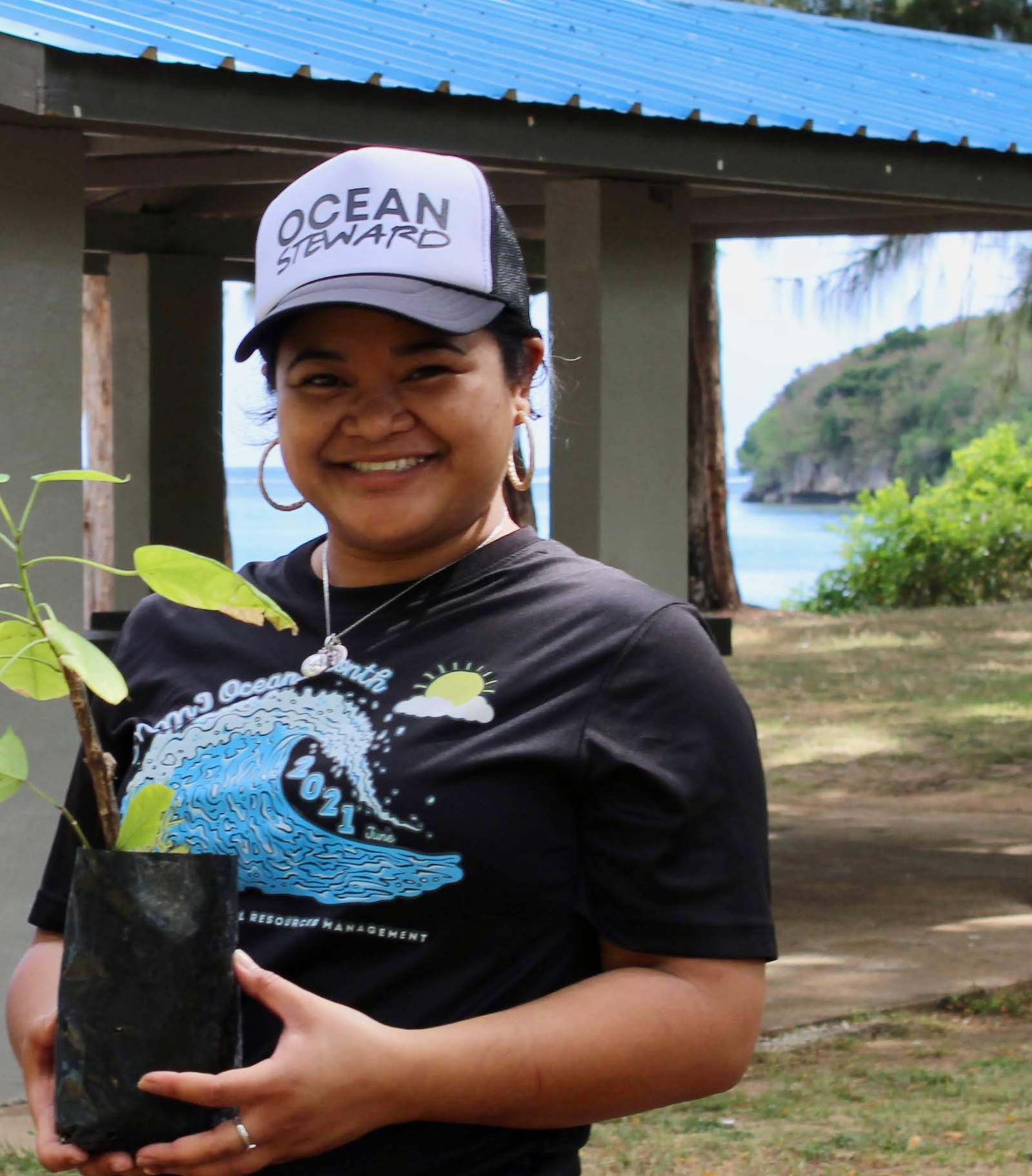By Andrew Roberto
AT Mariana Islands Nature Alliance, Jolly Ann Taisacan and Elizabeth Furey are doing the important work of supporting MINA so that its programmatic activities can promote the conservation of the island’s natural resources.
The mission of the nonprofit organization is to foster “community watch and outreach efforts” so that the CNMI can have a sustainable future.
Projects at MINA include the Community Recycles Plastics program, the Schools for Environmental Conservation program, Tasi Watch, and more.
With each of the projects, MINA’s aim has been to “promote and advocate for the protection and restoration of our natural resources” in the CNMI, according to their website.
With both Taisacan and Furey having been with MINA for over 12 years now, their work to support the growth of these programs has impacted the CNMI’s environment.
On the eve of International Women’s Day, Marianas Variety interviewed them both to learn more about what MINA is doing for the community and how environmentalism affects the islands.

Becky Furey says her family ties influenced her decesion to pursue conservation.
Elizabeth Furey
Furey, who is the nonprofit’s program director, says MINA is dedicated to teaching people how to integrate conservation into their daily lives, as well as strengthen their capacity to take care of the islands themselves.
And after over 12 years of service to MINA, she’s proud to see the Tasi Watch program grow “exponentially.” Started in 2010, the program trains recent high school graduates to become “community conservation messengers.”
The program teaches participants about field survey enumeration, report writing, basic CNMI natural resource ecology, turtle data collection, and much more.
As part of their work, participants communicate with the public about te MINA’s progress.
“This program has been instrumental in raising community awareness and support for better conservation practices that impacts everyone in the CNMI,” Furey said. “It is my hope that our efforts have empowered not just women but people from all walks of life to take action in protecting the environment today for tomorrow.”
Furey’s role at MINA is to keep the organization running smoothly. She says her duties include securing grants, fostering partnerships with stakeholders, and managing programs.
Her desire to work with MINA was influenced by her connection to family.
“Growing up in a family that deeply values the islands’ natural resources, it felt natural to become a part of an organization dedicated to conserving our culture and environment for current and future generations,” she said. “My greatest inspiration is a combination of my family’s commitment to education, a legacy in public service and our deep-rooted connection to the Marianas. My desire to protect and support the conservation of our natural resources for current and future generations, particularly my daughter, is a passion I share with my father who has served in this field for the last 40 years.”

Jolly Ann Taisacan has over 12 years experience at MINA. She hopes to continue in conservation for as long as possible.
Jolly Ann Taisacan
Taisacan began a career at MINA in 2012 when she was a participant in the Coral Reef Initiative Summer Internship program of the Division of Coral Reef Management.
In her current capacity, she designs, implements, and evaluates the organization’s conservation programs.
“I see my job as a bridge between knowledge and action,” she says. “Whether it is in coordinating projects or mentoring the next set of our environmental stewards, I ensure that each project’s goals and deliverables translate into real impact.”
Her work with the Schools for Environmental Conservation program sticks out in Taisacan’s mind.
The program is MINA’s longest serving program, founded in 2007. It works with middle and high school students to engage them in field experiences and educational activities revolving around a specific environmental issue.
Taisacan has seen the program transform students.
“There was a moment when a group of middle schoolers, who initially didn’t think they could make a difference, successfully led a project to raise awareness about marine debris,” Taisacan recalled. “They created artwork, presented their findings, and even convinced their school cafeteria caterers to reduce plastic waste. Seeing their confidence grow and knowing that our work empowered them to take action was incredibly fulfilling.”
Future of conservation
As both Taisacan and Furey have both made a career out of supporting STEM activities, Marianas Variety asked them if their specific field—conservation—employs enough women.
“The conservation field has made great strides in recent decades, and in my opinion, the CNMI is already a leader in women’s leadership in this area,” Furey said. “Many environmental nonprofit organizations and government-led environmental departments and divisions in the CNMI are currently led by women. Additionally, our Tasi Watch community rangers, who are women, are excelling and advancing their careers in natural resource management, with the hope that their paths lead them to even more leadership roles in the future. While we’ve made significant progress, there is still room for more young adults in positions across the field.”
Taisacan agrees, recognizing the growth in representation, but also acknowledging that the growth is not done.
“Women play a crucial role in conservation, and while we’ve made significant progress, there’s still room for growth,” she said. “We’ll know we have enough when representation is so natural and widespread that questions like this no longer need to be asked.”
Both Taisacan and Furey say they want to see more individuals taking up conservation.
“I encourage all the young people who call the CNMI home, regardless of gender, ethnicity, or religion, to pursue careers in conservation and environmental fields,” Furey said. “Our natural environment is a precious resource that requires diverse views and fresh ideas to protect and preserve it for future generations. There’s a growing recognition of the importance of engaging local youth in these efforts, as they are the future stewards of our islands. By getting involved in environmental conservation, young people can play a pivotal role in shaping the future of our natural resources and contribute to making a positive impact on the CNMI.”
Taisacan “absolutely” encourages women to get into conservation.
“Conservation is not just about fieldwork—it’s about education, policy, community engagement, and research, all of which benefit from diverse perspectives,” she said. “Women bring unique insights and leadership styles that strengthen conservation efforts.”
Both women hope to continue working in conservation for the rest of their lives.
“My passion for the environment is deeply connected to my love for the CNMI, and as long as there is work to be done to protect and preserve the islands, I will remain committed to making a positive impact,” Furey said. “It’s important to note that you don’t have to be a paid employee in the natural resource field to make a difference. Every action, every choice, and every effort, no matter how small, contributes to the well-being of our environment and our community.”
“Conservation is not just a career; it is a lifelong commitment,” Taisacan said. “Even if my role evolves over time, I know I’ll always be involved in the environment, education, and community-driven solutions. The challenges we face require ongoing effort, and I hope to continue contributing in meaningful ways for as long as I can.”











